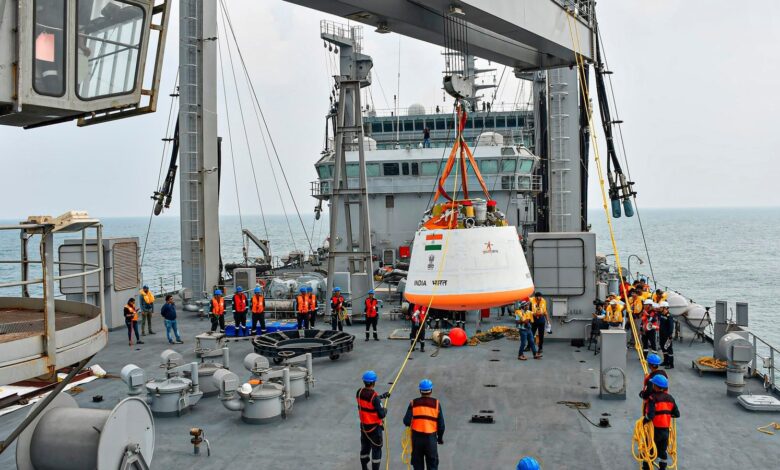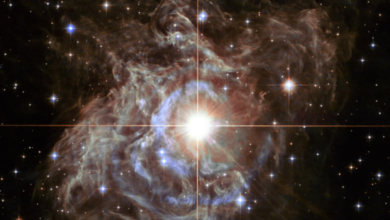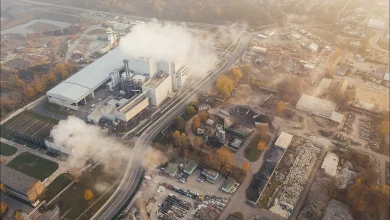Gearing up for Gaganyaan mission test: How ISRO will save the astronauts

In an effort to enhance the safety of the astronauts in its upcoming Gaganyaan mission, the Indian Space Research Organisation (ISRO) is set to conduct crucial test on the crew module’s stability during splashdown in the sea. The decision comes in the wake of an incident during the TV-D1 mission on October 21 this year when the crew module, intended for ISRO’s inaugural human spaceflight, experienced an unexpected upended orientation during recovery in the Bay of Bengal.
Uprighting System
To address this challenge, ISRO is gearing up for the second test mission (TV-D2) scheduled for the next year, preceding the comprehensive unmanned test flight into space for the crew module, utilising the LVM3 rocket as part of the Gaganyaan mission. S Shivakumar, the director of the TV-D1 mission, revealed that one of the critical systems to be tested is an “uprighting system” designed to prevent the crew module from overturning after splashdown, The Indian Express reported.
We are now on WhatsApp. Click to join.
Explaining the mechanism, Shivakumar likened it to gaseous balloons or airbags in cars. In the event of the crew module tilting, this system would deploy, restoring the module to an upright position. The TV-D1 mission uncovered challenges related to stability, particularly in the presence of lateral winds and sea wave disturbances, prompting the need for such a corrective system.
Ensuring Redundancy for Mission Success
Moreover, the crew module will feature redundancy systems to ensure the functionality of the primary uprighting system. Shivakumar emphasised the importance of recovery aids, such as beacons, working effectively underwater and the successful ejection of sea water dye to mark the landing region.
Upcoming Test Vehicle Mission
The next test vehicle mission, scheduled for the first quarter of the coming year, will simulate various conditions, including crew seat systems, suspension systems, and the performance of the uprighting system. Notably, the crew escape system will incorporate both low and high altitude escape motors, distinguishing it from the TV-D1 mission.
While the TV-D1 mission was marked a success, Shivakumar highlighted the significance of the upcoming TV-D2 mission, where a crew module more closely resembling the final design will be tested. The focus will be on simulating critical elements such as crew seats, control systems, and floatation systems, marking a crucial step forward in ISRO’s preparations for the historic Gaganyaan mission.
One more thing! HT Tech is now on WhatsApp Channels! Follow us by clicking the link so you never miss any updates from the world of technology. Click here to join now!




